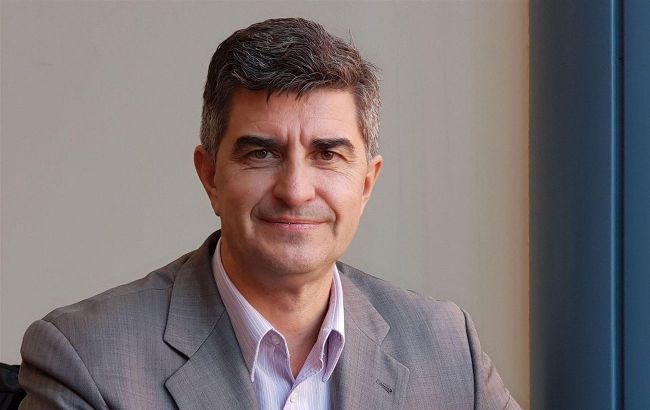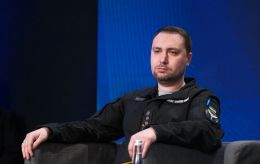NASA, Harvard and nanotech: Ukrainian Yury Gogotsi redefining future of science
 Yury Gogotsi (photo: drexel.edu)
Yury Gogotsi (photo: drexel.edu)
World history already knows several examples of prominent and gifted Ukrainians who have achieved important scientific achievements. One of them is Yury Gogotsi, who became a leader in nanotechnology in the United States.
Read about Yury Gogotsi, a prominent Ukrainian scientist in the United States.
Childhood and education
Yuriy Gogotsi was born on December 14, 1961, in Kyiv. From a young age, he was fascinated by physics, chemistry, and natural sciences.
His father, Heorhii Gogotsi, was also a scientist, a professor of mechanics of solid deformable bodies. Yuriy's brother, Oleksii, also followed the same path: he became a materials scientist and mechanic.
In 1984, Yuriy Gogotsi received a master's degree in research engineering, and two years later, he became a candidate of chemical sciences.
By the way, at that time, Yurii was the youngest candidate of chemical sciences in Ukraine at the Department of Physical Chemistry, National Technical University of Ukraine "Igor Sikorsky Kyiv Polytechnic Institute", he was 25 years old. Although he initially planned to enter the Faculty of Chemistry at the Kyiv National University, he failed because of his color blindness.
In 1995, he received his doctorate in engineering from the Franzevych Institute of Materials Science of the National Academy of Sciences of Ukraine.
In the 1990s, he moved to Germany and later to the United States, where his scientific career took on a global scale.
 Yury Gogotsi worked as a lecturer at leading universities around the world (photo: mrc.org.ua)
Yury Gogotsi worked as a lecturer at leading universities around the world (photo: mrc.org.ua)
How Gogotsi became leader in nanotechnology
Since moving abroad, Yuriy has worked at various leading universities in Germany, Japan, Norway, and the United States.
In the early 2000s, Yury Gogotsi began collaborating with leading American research institutions. His research in the field of nanotubes, carbon materials, and electrodes for supercapacitors quickly gained recognition.
A breakthrough came in 2011 when, together with his team, Gogotsi discovered a new class of two-dimensional materials called MXenes. These materials have unique properties: they are lightweight, superconducting, flexible, and suitable for energy storage.
Today, MXenes are considered to be the basic elements of a new wave of nanotechnology, from flexible electronics to space batteries.
In addition, Yuriy founded new research areas:
- corrosion of structural ceramics
- science and technology of surface pressure treatment
- synthesis of new inorganic compounds and materials by selective corrosion and extraction.
The professor is the inventor of more than 80 European and American patents, more than 30 of which have been licensed to the industry.
In the Stanford list of the world's top 2% of researchers in all scientific disciplines, Yury Gogotsi ranked 53rd among all living and deceased scientists.
Gogotsi is convinced that science should serve humanity. Today, his team is working to reduce the environmental impact of batteries, improve medical sensors, and create materials for faster internet.
Yuriy works at Drexel University in Philadelphia, where he heads the Institute for Nanomaterials. He is also a member of the US National Academy of Engineering, an honorary professor at the University of Tokyo, and a recipient of dozens of international awards.
The scientist's team of about 40 people from 11 countries receives $1.5 million in research funding annually.
 The scientist is the inventor of more than 80 patents and is among the top 2% of researchers in the world (photo: news.sumdu.edu.ua)
The scientist is the inventor of more than 80 patents and is among the top 2% of researchers in the world (photo: news.sumdu.edu.ua)
Cooperation with NASA, Harvard, and companies of the future
Gogotsi's research is actively used in NASA projects to develop new generation batteries that can be used in extreme space conditions.
In addition, MXenes have been the subject of research at Harvard University, MIT, and Stanford.
It also cooperates with large corporations such as Samsung, Tesla, and Bosch, where its developments are integrated into future products.
Since the beginning of Russia's full-scale invasion of Ukraine, Yury Gogotsi has been actively supporting Ukrainian scientists: he initiates international grants, helps with the evacuation of colleagues, and promotes Ukrainian science on the world stage.
You may also be interested:
- America is desperate for these professionals - Meanwhile, Ukraine has too many
- Top Ukrainian surnames you'll hear across America - You probably know one
- These 15 Ukrainian words are pronunciation nightmares for Americans
Sources: Wikipedia, UP Life, mrc.org.ua.

